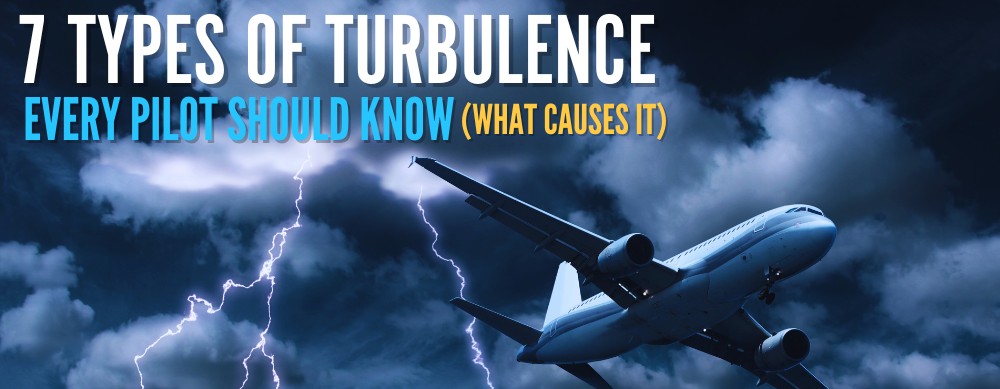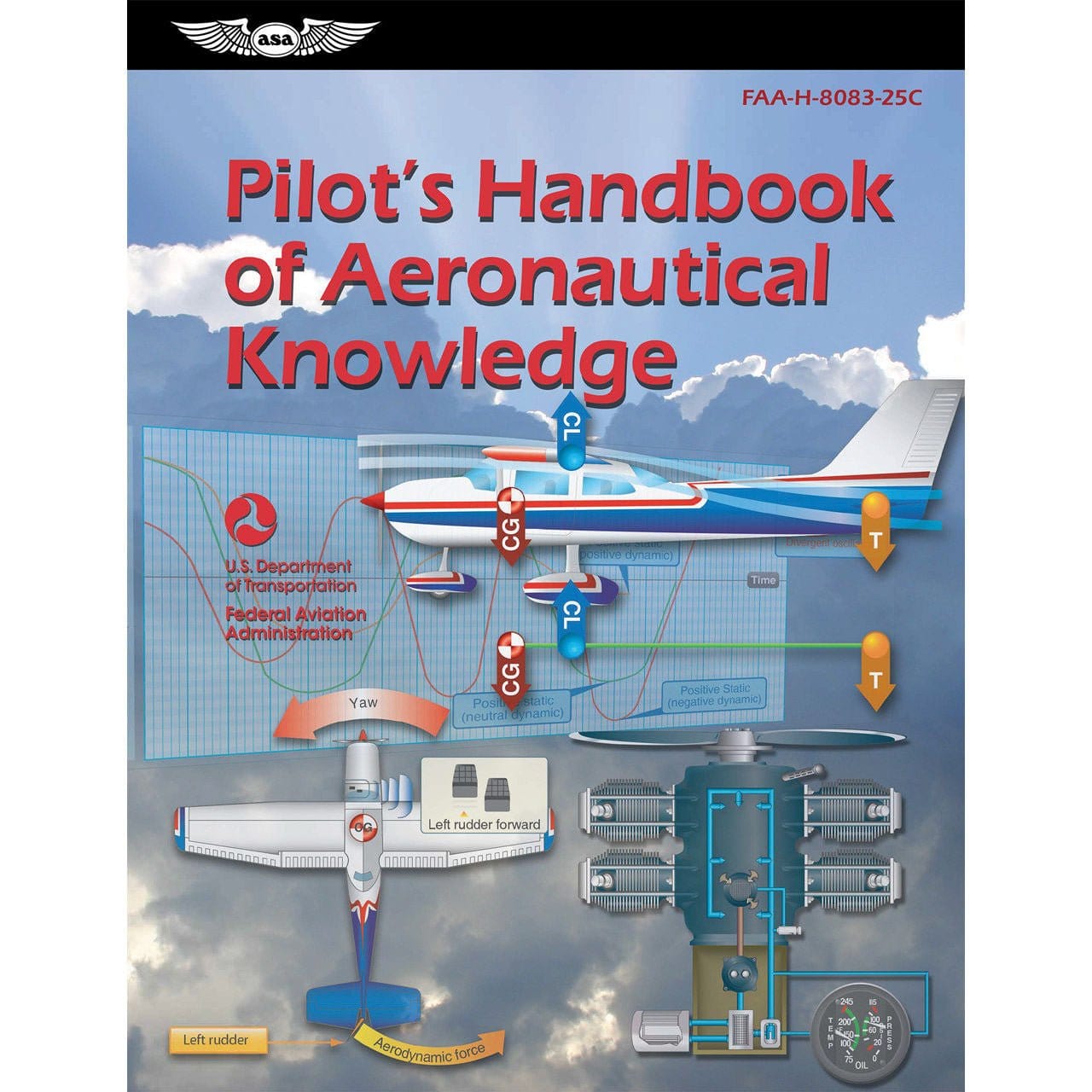Flight experiences often are met with brief encounters with turbulence, presenting a number of challenges for both passengers and crew. From the subtle jostles of light turbulence to the nerve-wracking moments with severe turbulence, the skies harbor various manifestations of this atmospheric phenomenon.
Turbulence is caused by changes in altitude and atmospheric conditions and can subject aircraft to a variety of disturbances, requiring vigilance from air traffic control, concern from flight attendants, and raising worries about potential structural damage.
Exploring these seven distinct types of turbulence, ranging from the small yet unsettling rumbles in light aircraft to the potentially difficult implications of severe turbulence unveils the intricacies of flight dynamics and the strategies used to navigate the unpredictable trials of dealing with rough air.
Let's get into it!

1. Clear Air Turbulence
Turbulence known as Clear Air Turbulence (CAT) manifests in cloud-free air, without any visual indicators such as clouds. This phenomenon arises from the collision of distinct air masses with varying wind speeds and directions.
Wind shear can be a key player, and can emerge when these divergent air masses collide, posing a challenge for conventional radar and naked-eye detection.
The region most susceptible to Clear Air Turbulence is at altitudes above 15,000 ft. and the elusive nature makes it hard for pilots to evade it. Typically, altering altitude by a few thousand feet provides an escape route from this type of turbulence.

2. Frontal Turbulence
The area of changing air between two opposing air masses along a sloping frontal surface creates a region of changing air pressure. This generates frontal turbulence, characterized by the rise of warm air and friction between cold and warm air masses.
Thunderstorms intensify the effects of this turbulence. While cold fronts are known for turbulent weather, but warm fronts can also instigate varying degrees of frontal turbulence because of the collision between warm and cold air masses.

3. Mechanical Turbulence
Mechanical Turbulence is when an obstacle causes an obstruction to wind flows. Friction that takes place between the air and the ground can cause turbulent eddies. Factors such as wind speed (of around 20kts or more), irregular terrain, and air stability.
When it is unstable because of heat rising from the surface, thsoe eddies can grow bigger and the choppiness increases. If the air is stable, the eddies won't expand as much, but they will take a logner period of time to dissapate.

4. Mountain Wave Turbulence
Mountain Wave Turbulence occurs when powerful winds pass over large terrains like mountain ranges, causing disturbances in the air. As these winds encounter the mountain range ridges, they create what's called mountain waves. These waves result from the interaction between unstable air on the windward side and stable air on the lee side of the mountains.
When the wind speed flow moves upward, it generates mountain waves that lead to significant turbulence. The stability of the air influences the severity of the turbulence. Mountain wave turbulence is known to be intense due to the combination of strong winds, varying air stability, and the rugged landscape.
Mountain waves produce potentially fatal consequences, it is important to recognize the possible danger posed by mountain wave turbulence which is not always immediately visible.

5. Thermal Turbulence (Convective)
Thermal turbulence occurs due to uneven surface heating by the sun, creating a turbulent system. When the Earth's surface heats unevenly, with warm air rising with cooler air moving downward, it forms convective currents.
This movement is what leads to thermal turbulence, as the warm air rises and the colder air descends in a continuous cycle, causing dynamic fluctuations in the atmosphere.

6. Thunderstorm Turbulence
Severe turbulence within thunderstorms originates from the powerful updrafts and downdrafts within these convective systems. When warm, moisture-laden air ascends rapidly, it collides with colder air masses above, sparking chaotic interactions.
This clash generates erratic movements, abrupt changes in wind speed and direction, and pockets of severe turbulence. The intense convective turbulence within thunderstorms poses a hazardous environment for aircraft, with conditions that often escalate into severe turbulence, making navigating through the skies exceptionally challenging.

7. Wind Shear
Wind shear occurs when there are shifts in wind direction and/or speed over a designated area, either horizontally or vertically. One of the most common places for this phenomenon to happen is near the jet stream, around troughs and lows, and in areas with temperature inversion turbulence.
Other Types of Turbulence to Keep in Mind
There are various types of turbulence pilots must consider beyond the seven types we've listed.
-
Wake Turbulence: Wake turbulence, caused by an aircraft's wingtip vortices, can be particularly hazardous during takeoff or landing, especially for smaller planes following larger ones.
-
Jet stream Turbulence: Jet stream turbulence arises from strong horizontal winds in the upper atmosphere, potentially leading to sudden and unexpected changes in altitude.
-
Temperature Inversion Turbulence: Inversion layers, where temperature increases with altitude, can cause irregular motion and unexpected turbulence as aircraft pass through these atmospheric boundaries.
Understanding these diverse forms of turbulence is crucial as they can arise violently and induce irregular movements, impacting flight safety.
We recommend checking out the weather.gov page that details each type of turbulence. It is great information to commit to memory.

|
ASA Aviation WeatherAll pilots deal with weather. They must learn to appreciate good weather; to recognize and respect marginal or hazardous weather; and to avoid violent weather. Recognizing these weather patterns and making the appropriate decisions are critical to the successful outcome of all flights. This book discusses each aspect of weather as it relates to aircraft operation and flight safety. |
Takeaway
Whether you do or don't feel bothered by turbulence, navigating through it is an inherent part of flying. During some point in your time as an aviator you will encounter strong winds or disturbed air. As pilots, we need to acknowledge that avoiding turbulence entirely might not be feasible, but being equipped with the right knowledge can significantly mitigate its impact.
Understanding the various types of turbulence, whether it's wake turbulence from preceding aircraft, the effects of strong winds causing irregular motion, or encountering pockets of rough air, empowers pilots to make informed decisions in-flight.
Learn about the strategies to minimize its effects on aircraft flying, especially for light aircraft that are more susceptible to its impact.
Employing precautionary measures and adopting appropriate flight strategies when entering turbulent zones can make a significant difference in passenger comfort and flight safety.
Staying attuned to weather forecasts and real-time updates allows pilots to proactively adjust flight paths, altitudes, or speeds, optimizing the aircraft's response to turbulent conditions. Employing proper communication with air traffic control regarding known turbulence areas or requesting alternate routes when possible creates a safer and smoother flight experience for everyone.
Fly safe!
Want to Learn More About Extreme Turbulence Avoidance?
Explore topics such as low to moderate turbulence, wake turbulence avoidance, AIRMETs, and SIGMETs with these instructional guides.
-
Ditch the Rough Ride: How to Avoid Turbulence (And What to Do if You Can’t)
-
12 Types of Clouds Pilots Must Recognize [#12 Can be Deadly]
Did you find this article helpful?
Do you think we missed anything important? Let us know in the comments below!








